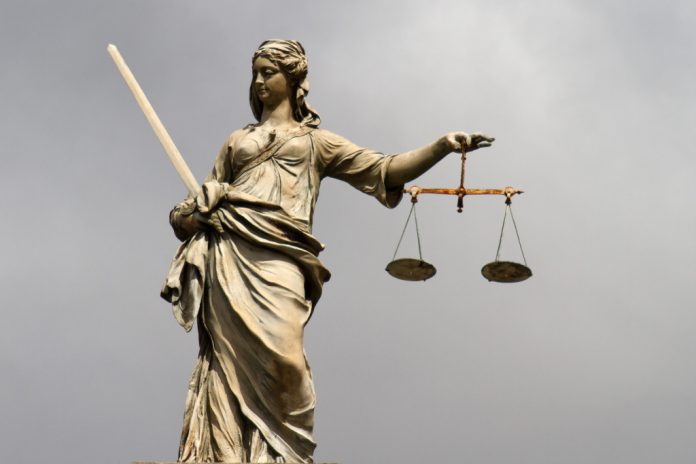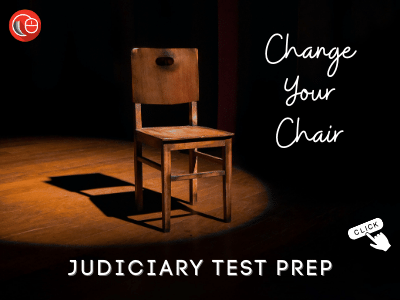This article is written by Tushitta Murali, from Tamil Nadu National Law University. This is an exhaustive article that deals with Judicial Precedents as a source of law.
Table of Contents
Introduction
There are many sources from which we derive what we know to be as law. Law in layman terms is nothing but a set of rules and regulations that we as a society agree to follow so that we do not infringe on the rights of others and can safeguard our own rights. The right to exercise one’s right stops when it infringes upon the right of another. The insecurity that is felt among people once the concept of property and ownership came in was done away with the help of law that placed three organs; the legislature to make law, the executive to implement it and the judiciary to adjudicate on matters. These organs function in tandem and are required to not interfere in the fields that are carved for another organ. While interference can be natural to hold checks and balances, such interference cannot be done with any malafide intention.
One of the sources of law are legislations which mean ‘rulemaking’ in Latin. It is one of the primary sources of law and has a huge ambit with regard to authorizations. Customs form another important part of the law. These have been carried down from generation to generation and have been in practice since time immemorial. This kind of inheritance or passing down from generation to generation is what constitutes a custom. Laws are based upon these customs. Laws are a reflection of society and this makes it necessary to include the various customs of the parts to protect the interests of a diverse culture. Judicial precedents based on the principle of stare decisis are also a source of law as they offer a backbone or support to rely on, in cases with similar facts. Treaties and conventions on an international level are also used to make law as with increased globalization, all the countries are required to interact with each other more than before. Justice, equity and good conscience have always been what law and decisions must be based on. In the absence of any one of these, the decision will be held to be arbitrary or unconstitutional and eventually struck down.
Judicial precedents
A precedent is a principle or a rule that was declared or laid down in a previous legal case. It is binding or advisory on tribunals and courts when a similar case with similar facts arises before it. These are nothing but previous legal decisions that have been taken by judges in similar cases in these courts that provide an outline as to what must be held in similar cases that arise before the court or similar cases that arise in lower courts or similar cases that arise before a lesser bench. A lesser bench is when the number of judges is lesser than those that decided the case that the new bench will be basing their decision on. In the 18th century, the Government of India Act, 1935, held that decisions made in Federal courts and in the Privy Councils would be binding on the courts during the reign of the British. Since the 18th century, precedents have been a legal characteristic of the Indian legal system and have helped many judges form decisions and reverse decisions that later on were found to be arbitrary or mindless.
Types of precedents
- Declaratory and Original: In declaratory precedents, the mere application of a rule in a previous legal case is used. Original precedents result in the creation of new laws. Here new laws are created and applied. An example can be where we considered that the power to amend the constitution was not restricted till it was decided that limits must be placed on the same and that all laws in the Ninth Schedule henceforth must also be tested against the basic structure.
- Persuasive: Here the precedent is not necessarily needed to be followed. The judge will rely heavily on this case and take it into consideration. It is not directly considered as a source of law but is seen as a form of historical precedents. This is usually seen in High Courts, where the judgements in one High Court can be considered as persuasive precedents in another. This can be seen when similar cases arise in various High Courts the verdict can be made by relying upon judgments from other High Courts. They will not be binding but will be persuasive and will act in favour of the litigating party in whose favour the previous verdicts have been made.
- Absolutely authoritative: In these cases, the verdict that has been earlier must mandatorily be followed by the judge. Even if the judge thinks that it is a wrong judgement they are required to follow that precedent because of sheer numbers. This is usually seen in cases where the bench is smaller than the bench that decided upon the precedent that the judge is relying on. This is also possible in cases of hierarchy, where certain courts have to rely on decisions made by superior courts.
- Conditionally authoritative: In this case, the precedents by a general rule are considered authoritative but can be disregarded in cases of the parties appearing before the Supreme Court. The decision can also be overturned. An example can be where we considered that the power to amend the constitution was complete till it was decided that limits must be placed on the same and that all laws in the Ninth Schedule, henceforth must also be tested against the basic structure.
Relevance of judicial precedents
India has a unified judicial system with a single constitution. This means that there is only one Judiciary that is responsible for the interpretation of the Constitution. The Apex Court is the ultimate interpreter. This is a part of the basic framework of our Constitution. We are Federal with a strong Centre, unlike the United States where they follow federalism in the true sense. This was done with the view of ensuring that the various provinces while having their own State Legislatures are held together by a strong centre. This was to make sure that riots and protests do not break out in the newly formed nation that had not only been ruled by the Britishers but had also recently witnessed a partition that resulted in a refugee crisis as severe as the refugee crisis in Europe after the Second World War. The person who is best equipped to make a decision is the Supreme Court and its judges. There arises no question as to who the most effective, appropriate and the only body must be, while interpreting the law. It is the Supreme Court. In these cases, judicial precedents allow us to make sure that the law of the land is uniform.
Nature of judicial precedents
- They must be purely constitutive and not abrogative in nature. Hence, while a judicial decision can make a law it cannot alter it.
- When there is a settled rule of law, the judge must adhere to the same.
- A judge cannot substitute their opinions for the established rule of law and make decisions based on what they think should be happening, should have happened or could have happened.
- The function of the precedent is limited to supplying the vacancies of the legal systems by filling up with new law the gaps that exist.
Importance
The primary function of the Judiciary is the settlement of disputes. Initially, while adjudicating, the courts are guided by customs and their own sense of justice. Later on, legislations become the main source of law and the Rule of Law is what judges base their decisions on.
- Inductive method– A great amount of reliance is placed upon the decisions of the judges in this method. The judges look into previously decided cases in the same or superior courts before giving a final judgement, of a similar nature that have already been adjudicated upon before. They consider general rules and principles from the previous case and apply them on the cases before them. They then decide accordingly. This is known as the Inductive method.
- Deductive method– In this method, a great amount of reliance is placed on legislatures and the enacted statutes. It can be seen as a kind of positivist approach but most judges are now free to interpret the law in any way they see fit to favour justice, equity and good conscience. In such a system, the cases are decided on the basis of the enacted legislation and statute that are codified and the judges decide cases on the basis of these statutes. Here the judges do not decide on the basis of previously decided cases.
In the traditional legal system
The importance of the decisions as a source of law was recognized in very early times. Sir Edward Coke, in the preface of the sixth part of his report, had mentioned that Moses was the first law reporter. Even in the religious scriptures, it has been stated that the path followed by virtuous men must be passed on from generation to generation. This is the idea behind precedents. In the Babylonian empire and the Chinese dynasties, the judicial decisions were considered to be a source of law.
In the modern legal system
Among the modern legal systems, the Anglo – American law is judge made law. It is also known as ‘Common Law’. It has developed only through judicial decisions. Most branches of law, such as torts, have been created exclusively by judges. The Constitutional law of England and in specific the freedom of citizens has been developed through judicial decisions. Not only in municipal but also in international law precedents are given immense importance. The decisions given by the International Court of Justice are an important source of international law. These precedents have been recognized by the International Court of Justice in Hague under Article 38(2)(d) of the Statue of the International Court of Justice. Article 59 of the same convention expresses that the decisions of the court only have persuasive value for future cases and therefore hints at the fact that the International Court of Justice is not bound by its own decisions in deciding factually similar cases in future. It holds that the decision is only binding upon the parties to the case.
Doctrine of Stare Decisis
Stare decisis is the legal principle which requires judges to abide by and respect the precedents laid down by similar prior decisions. The Latin maxim, Stare decisis et non quieta movere which means, “to stand by decisions and not disturb the undisturbed” forms the basis of this legal principle. In the legal context, judges interpret as meaning to not disturb already settled matters to allow for continuity. If varying judges gave their opinion in different matters in different courts, having similar facts would lead to chaos and many parties would feel like their rights have been infringed and they would feel helpless and like justice has not been served to them. This doctrine is basically a rule or a requirement that a Court must follow the rules established by a superior court.
Verdicts that need to be seen as having a binding precedent is not valid in most civil law jurisdictions as it is seen a bare reading of the text as interfering with the right of judges to interpret the law and the right of the legislature to frame the law. Most such systems, however, recognize the concept of jurisprudence constante, which argues that even though judges are independent, they should judge in a predictable and non-chaotic manner. As a concept, discretionary power is one which allows the decision-maker to apply their own subjective assessment in choosing between several reasonable options. As there are no technically correct choices in such a determination, discretionary power is by nature, broad and opens up a whole array of choices. Discretionary power, especially if capable of effecting far-reaching consequences, should not be given to just one person. In the rare instance that it is conferred on a single person, there have to be considerable checks on the person to control the manner in which it is exercised. Therefore, a judges’ right to interpret law does not preclude the adoption of a small number of selected binding case laws.
Authority of judicial precedents
There are cases which have questions that are required to be answered on the basis of principles of law that are in the text of the constitution. Such principles are deduced by way of recognizing what the material facts of the case are so that a set of principles that can be generally used is formed. The principle that comes out as a result of such a case is not applicable only to that case, but to cases which are essentially similar to the decided case in their major facts as well as features. This principle is called Ratio Decidendi. The issues which do not require the determination of general principles and are answered on the circumstances of the particular case do not lay down any principles of general application. These are called Obiter Dictum.
It is the Ratio Decidendi of a case that is binding and not the Obiter Dictum that has the binding effect on a precedent. It is for the judge to determine the Ratio Decidendi of the decision and the method of application of the Ratio Decidendi to the case which he is going to decide. This gives an opportunity to him to mould the law according to the changed conditions.
Merits and demerits of judicial precedents
There is a reason for the decision of a case, whether we understand it or not. It is necessary that the same is followed henceforth. Settled disputes must not be argued upon again as it results in a waste of the court’s time. Precedents are based on customs and are therefore reflective of public opinion. It gives certainty to the law. While the law lays out certain situations, these precedents account for those factors that cannot be factored into theory. It guides judges to think practically without prejudice. Certain important issues may not be raised in precedents that might cost a party the case, a lower court cannot overturn the verdict of a higher court. Sometimes the decision itself can be wrong but cannot be overturned.
Conclusion
The use of precedents in the legal system is important for various reasons. Precedents serve as a reminder and as a base to build on cases.
References
- https://lawsisto.com/artcileread/NDYz/IMPORTANCE-OF-PRECEDENTS
- https://guides.library.queensu.ca/forms-and-precedents
Students of Lawsikho courses regularly produce writing assignments and work on practical exercises as a part of their coursework and develop themselves in real-life practical skills.
LawSikho has created a telegram group for exchanging legal knowledge, referrals, and various opportunities. You can click on this link and join:
Follow us on Instagram and subscribe to our YouTube channel for more amazing legal content.
 Serato DJ Crack 2025Serato DJ PRO Crack
Serato DJ Crack 2025Serato DJ PRO Crack













 Allow notifications
Allow notifications


